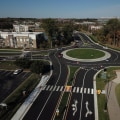On June 3, 1770, Captain Gaspar de Portola and Franciscan Father Junípero Serra founded the Carmel Mission and the Presidio de Monterrey next to Monterrey Bay. During the following year, prison soldiers often mistreated local American Indians who lived in the area. On April 13, 1837, John Felps (Phelps), Alexander Mills, Seth Green and Daniel Warren established the city of Bethlehem. The plot contained a total of fourteen lots.
The area, formerly inhabited by Indians from Delaware (Miami), soon became inhabited by Quakers. Andrew Jackson was president of the United States at the time. Father Serra founded the Carmel Mission on June 3, 1770 in the Presidio of Monterrey, as the second mission in California. In December 1771, he moved him to the current site, 3 miles south of Monterrey, to keep his Indian neophytes away from the corrupting influence of the presidential garrison.
Serra and his devoted companion, Father Crespi, who were in the mission for the rest of their lives, served not only in the local area but also in the other missions in California. As father-president, Serra was responsible for establishing nine missions, all of which he visited frequently to provide encouragement and advice. Ascetic, humble and meek, but a vigorous fighter in the defense of the religious order and against the political order, he rightfully earned the title of spiritual father of California. In 1986, the Carmel Civic Square was inaugurated, and the city offices were relocated in the following years.
To add to the already impressive list of talented creatives who called Carmel home, the population included authors such as Mary Austin, Lincoln Steffens and Sinclair Lewis. Abbie Jane Hunter, founder of the San Francisco-based Women's Real Estate Investment Company, first used the name Carmel-by-the-Sea in a promotional postcard. The nearby San Carlos Borroméo Mission of the Carmel River was founded in 1770 in Monterrey by the Spanish Franciscan missionary Junipero Serra; it was moved to the Carmel area in 1771 and Serra is buried in the sanctuary. In 1888, Escole and Santiago Duckworth, a young promoter from Monterrey who dreams of establishing a Catholic retreat near the Carmel Mission, presented a map of subdivisions to the Monterey County Recorder.
The decision of a Carmelo man to honor his wife made him one of the city's most legendary characters. One of the eight most important arts institutions in Monterey County, it was founded in 1982 by Stephen Moorer, a resident of Carmel, as the GroveMont Theater. The San Carlos Borromeo de Carmelo Mission was founded on June 3, 1770 in the nearby Monterrey settlement, but Junípero Serra moved it to Carmelo due to the interaction between soldiers stationed in the nearby Presidio and the native Indians. The story of Carmelo began when the Spanish explorer Juan Rodríguez Cabrillo first saw the white sand beach and pine forest 50 years after Columbus discovered America.
Legend has it that Robert Louis Stevenson was inspired for Treasure Island while walking on a beach near Point Lobos in Carmel. Known as Rancho Las Manzanitas, this area was purchased by French businessman Honore Escole in 1850s. Powers created a development company that ordered planting 100 cypress trees in arid potato orchards along coast. In 1906, San Francisco photographer Arnold Genthe joined artistic colony of Carmel where he could continue pioneering work in color photography.
Located on Monterrey Peninsula, Carmel is known for its natural landscape and rich artistic history. Today it is one of most popular tourist destinations on California's Central Coast with its quaint shops and galleries as well as its stunning beaches and parks.


